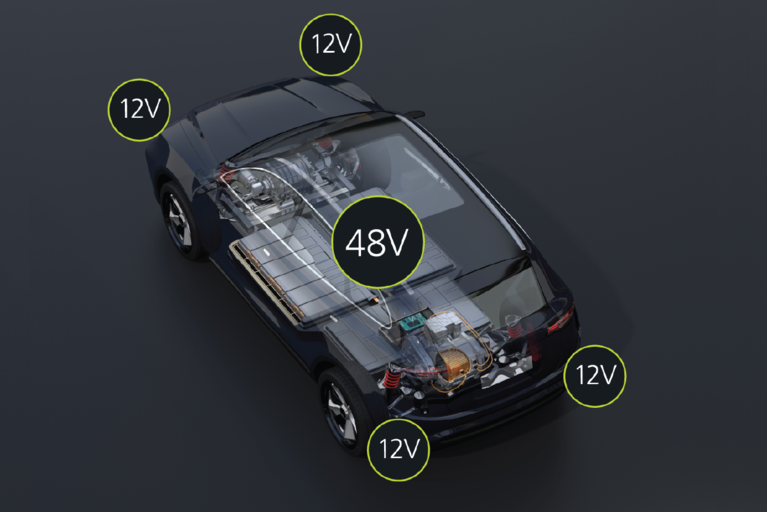
高密度功率模块简化和缩小电动汽车电源系统设计
Vicor 电源模块为电动汽车应用注入创新。了解三款汽车级新产品将如何彻底改变未来的电源设计
VTM 和 BCM 等 Vicor 器件使用正弦振幅转换器拓扑 (SAC) 提供隔离和变压功能,您可以将这些功能放在需要的地方,将其与稳压分开。
此外,SAC 还可实现灵活的设计方法:基于该拓扑的器件可单独使用,也可以串联或并联,提供更高的输出电流或电压。
图 1:VTM 的串联和并联
考虑以下示例:在 36V 到 75V 的输入电压负载下,需要一款 200V 的稳压电轨。为了实现这一点,使用四个 K 因数均为 1 的 50V 输出电压 SAC 模块 (VTM) M1、M2、M3 和 M4。K 因数为 1 时,输入输出电压相等。输出电流 IOUT 是所有 SAC 模块通用的电流。在这一执行过程中,一定要使一个组中的所有 SAC 模块同步启动所有这些模块,才能使最终转换器准确无误地工作。
对于 N 个 SAC 而言,总输出电压为串联输出时所有所连 SAC 的输出电压之和,如下所示。
其中 Total_VOUT = 串联正弦转换器的总输出电压。N 是 SAC 模块数。KN 和 VOUTN 为各串联 SAC 的变压因数和输出电压,VIN 为 SAC 的输入电压,等于稳压器模块的输出电压,VINS 为施加在稳压器输入端的非稳压输入电压电源的电压。
最终系统如下图所示:
图 2:采用串联 VTM 的 50V 输入、200V 输出电源链
相关内容
产品概览:PRM 和 VTM
应用笔记:PRM 和 VTM 并行阵列工作
高密度功率模块简化和缩小电动汽车电源系统设计
Vicor 电源模块为电动汽车应用注入创新。了解三款汽车级新产品将如何彻底改变未来的电源设计
高密度电源模块推动主动悬架技术日趋成熟
主动悬挂系统已从 20 世纪 90 年代的测试版发展成为今天的 48V 驱动系统。了解电源模块对电源系统设计的影响
基于 MHz 开关频率的器件助力实现 DC-DC 转换器和 EMI 滤波器的小型化
想象一下,使用 DC-DC 转换器解决方案来利用高频开关的优势,而不会发生传统解決方案的缺点
采用 48V 区域架构,打造面向未来的先进电动汽车
随着原始设备制造商(OEM)采用 48V 电源架构,他们正努力优化其电源系统设计。Vicor 的高功率密度模块可为 48V 区域架构提供峰值效率




